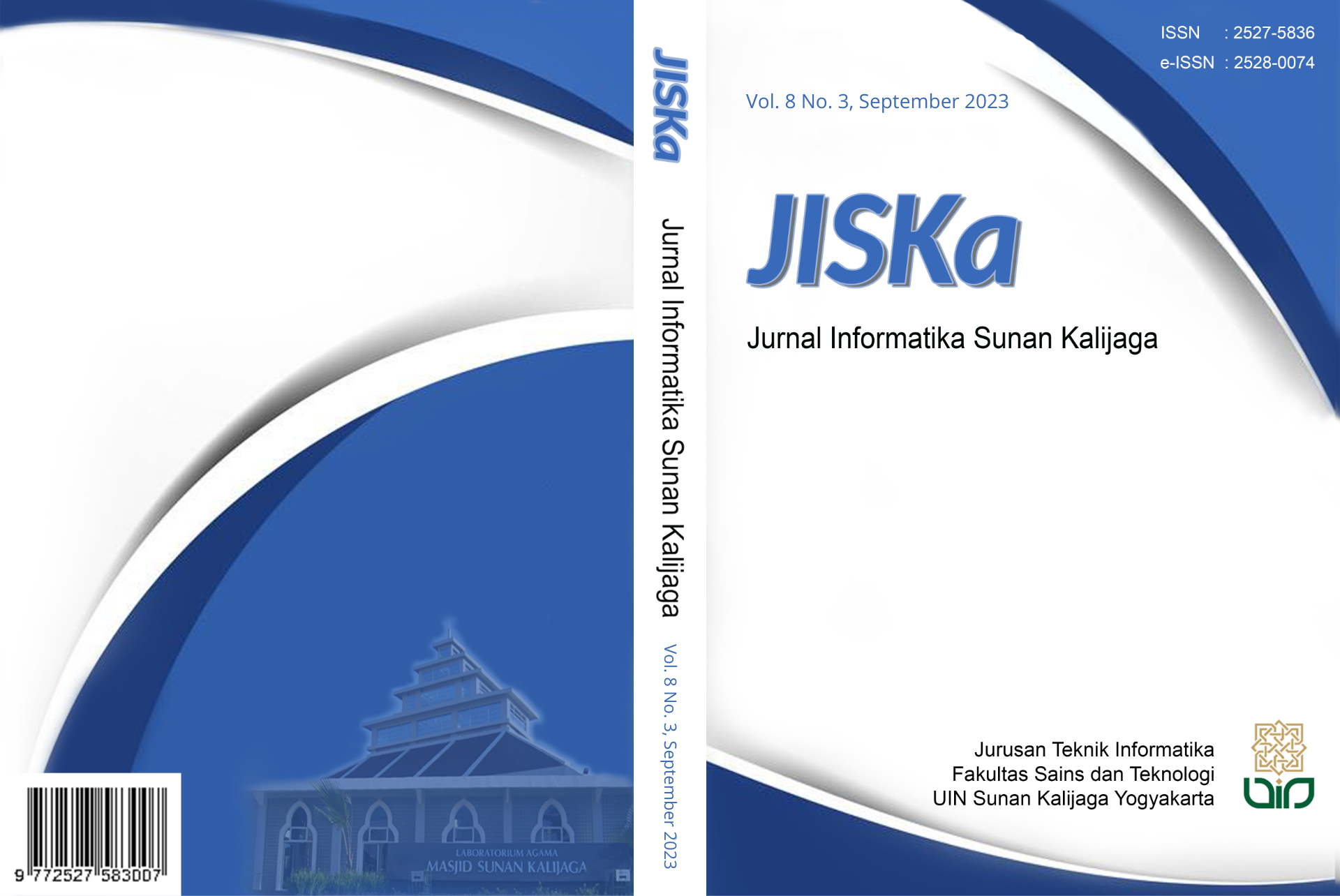Pemodelan Proses Bisnis Kuliah Online MOOCs menggunakan BPMN (Studi Kasus alison.com)
DOI:
https://doi.org/10.14421/jiska.2023.8.3.199-209Keywords:
MOOCs, Learning Technology, BPMN, Online Courses, Business ProcessAbstract
Online lectures have been recognized for their existence in independent learning. However, many still don't know the scope of the business process, from the account registration process to taking exams. This article discusses business process modeling using Business Process Modeling Notation (BPMN) in online lectures on the international standard ALISON MOOC models. This research aims to overview the process and business model of MOOC online lectures with ALISON. This type of research is descriptive qualitative, which describes objective conditions based on facts the researcher found in the field. Data is collected through literature study, problem analysis, and business process modeling. This research results in modeling the online college business process at ALISON. The business process elements, from course registration to the exam implementation, are mapped in detail using the BPMN standard. Through modeling using BPMN, the process of creating an account, participant profile, course selection, course registration, learning media, completing assignments and exams, and obtaining a certificate can be described. This article provides helpful information for users interested in business process modeling and its notation in the ALISON online course.
References
Bakki, A., Oubahssi, L., George, S., & Cherkaoui, C. (2020). A Model and Tool to Support Pedagogical Scenario Building for Connectivist MOOC. Technology, Knowledge and Learning, 25(4), 899–927. https://doi.org/10.1007/s10758-020-09444-8
Feng, L., Jiang, H., Wang, J., & Gong, Y. (2018). Design, implementation and evaluation of MOOCs and DBL‐based cross‐registration. Computer Applications in Engineering Education, 26(2), 405–412. https://doi.org/10.1002/cae.21893
Firdaus, A. (2022). Pemodelan Proses Bisnis Konveksi di Tasikmalaya dengan Business Process Model and Notation (BPMN). Jurnal Ekonomi Dan Bisnis Digital, 1(3), 133–142. https://doi.org/10.55927/ministal.v1i3.826
Garcia, M. T., Nunes, M. M., Fantinato, M., Peres, S. M., & Thom, L. H. (2023). BPMN-Sim: A multilevel structural similarity technique for BPMN process models. Information Systems, 116, 102211. https://doi.org/10.1016/j.is.2023.102211
Hidayatun, N., Susafa’ati, S., & Murtina, H. (2022). Perancangan Aplikasi MOOC untuk Kursus Online Berbasis Android dan iOS Menggunakan Prototyping Model. Jurnal Digit, 12(2), 144. https://doi.org/10.51920/jd.v12i2.291
Ismanto, I., Hidayah, F., & Charisma, K. (2020). Pemodelan Proses Bisnis Menggunakan Business Process Modelling Notation (BPMN) (Studi Kasus Unit Penelitian Dan Pengabdian Kepada Masyarakat (P2KM) Akademi Komunitas Negeri Putra Sang Fajar Blitar). Briliant: Jurnal Riset Dan Konseptual, 5(1), 69. https://doi.org/10.28926/briliant.v5i1.430
Kirikkayis, Y., Gallik, F., Winter, M., & Reichert, M. (2023). BPMNE4IoT: A Framework for Modeling, Executing and Monitoring IoT-Driven Processes. Future Internet, 15(3), 90. https://doi.org/10.3390/fi15030090
Oktaviani, K. (2021). Between Coursebook and Alison.com. K-Media.
Sani, R. R., Sukamto, T. S., & Emmerig, R. (2023). Desain Knowledge Management System pada Program Studi Sebagai Media Berbagi Pengetahuan. Jurnal Sistem Dan Teknologi Informasi (JustIN), 11(1), 192. https://doi.org/10.26418/justin.v11i1.53930
Singh, A. D., Abuhamdieh, S., & Raghunathan, S. (2019). Disruptive Learning. In MOOCs and Open Education in the Global South (pp. 256–270). Routledge. https://doi.org/10.4324/9780429398919-27
Sumarsono, S. (2019). The paradigms of heutagogy and cybergogy in the transdisciplinary perspective. Jurnal Pendidikan Dan Pengajaran, 52(3), 172–182. https://doi.org/10.23887/JPP.V52I3.22882
Sumarsono, S., & Firanti, A. (2021). Identification of Informatics Engineering Student Learning Styles in the Independent Learning Era. Jurnal Pendidikan Dan Pengajaran, 54(2), 306. https://doi.org/10.23887/jpp.v54i2.28672
Sumarsono, S., Sutrisno, S., & Fatwanto, A. (2021). Feasibility Study of Massive Open Online Course (MOOC) in Supporting Self Determined Learning in Perguruan Tinggi Keagamaan Islam Negeri (PTKIN). Compiler, 10(2), 109. https://doi.org/10.28989/compiler.v10i2.1106
Sumarsono, Sutrisno, & Agung.Fatwanto. (2021). Feasibility study of Massive Open Online Course (MOOC) in supporting self determined learning in state islamic higher education. Compiler, 10(2), 109–116.
Tiftik, M. N., Erdogan, T. G., & Tarhan, A. K. (2022). A framework for multi-perspective process mining into a BPMN process model. Mathematical Biosciences and Engineering, 19(11), 11800–11820. https://doi.org/10.3934/mbe.2022550
ur Rehman, I., Bano, S., & Mehraj, M. (2019). MOOCS: A case study of ALISON platform. Library Philosophy and Practice. https://digitalcommons.unl.edu/libphilprac
Zhu, M., Sari, A. R., & Lee, M. M. (2022). Trends and Issues in MOOC Learning Analytics Empirical Research: A Systematic Literature Review (2011–2021). Education and Information Technologies, 27(7), 10135–10160. https://doi.org/10.1007/S10639-022-11031-6/FIGURES/12
Downloads
Published
How to Cite
Issue
Section
License
Copyright (c) 2023 Sumarsono Sumarsono, Dodi Saputro, Aulia Faqih Rifai

This work is licensed under a Creative Commons Attribution-NonCommercial 4.0 International License.
Authors who publish with this journal agree to the following terms as stated in http://creativecommons.org/licenses/by-nc/4.0
a. Authors retain copyright and grant the journal right of first publication with the work simultaneously licensed under a Creative Commons Attribution License that allows others to share the work with an acknowledgement of the work's authorship and initial publication in this journal.
b. Authors are able to enter into separate, additional contractual arrangements for the non-exclusive distribution of the journal's published version of the work (e.g., post it to an institutional repository or publish it in a book), with an acknowledgement of its initial publication in this journal.
c. Authors are permitted and encouraged to post their work online (e.g., in institutional repositories or on their website) prior to and during the submission process, as it can lead to productive exchanges, as well as earlier and greater citation of published work.










